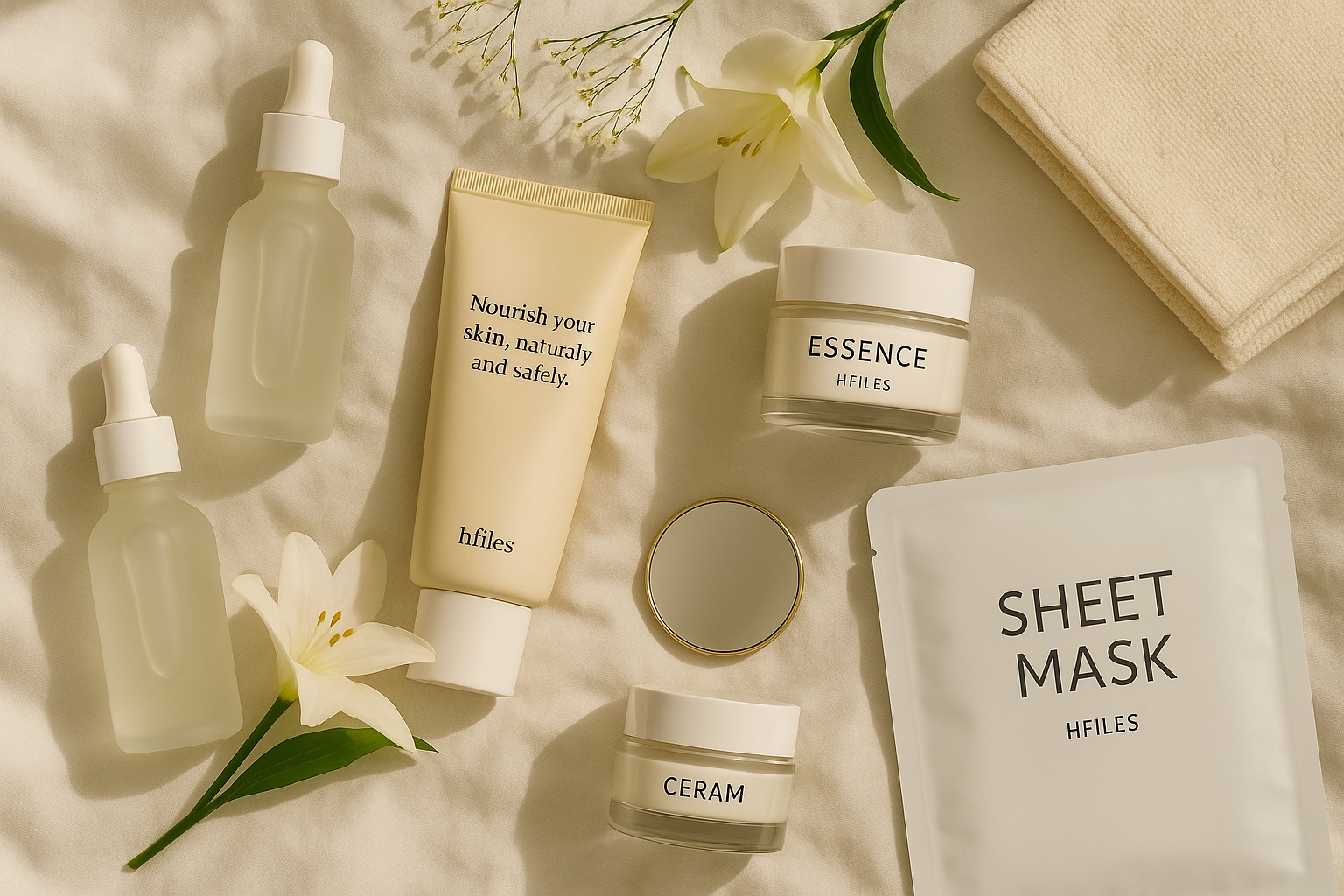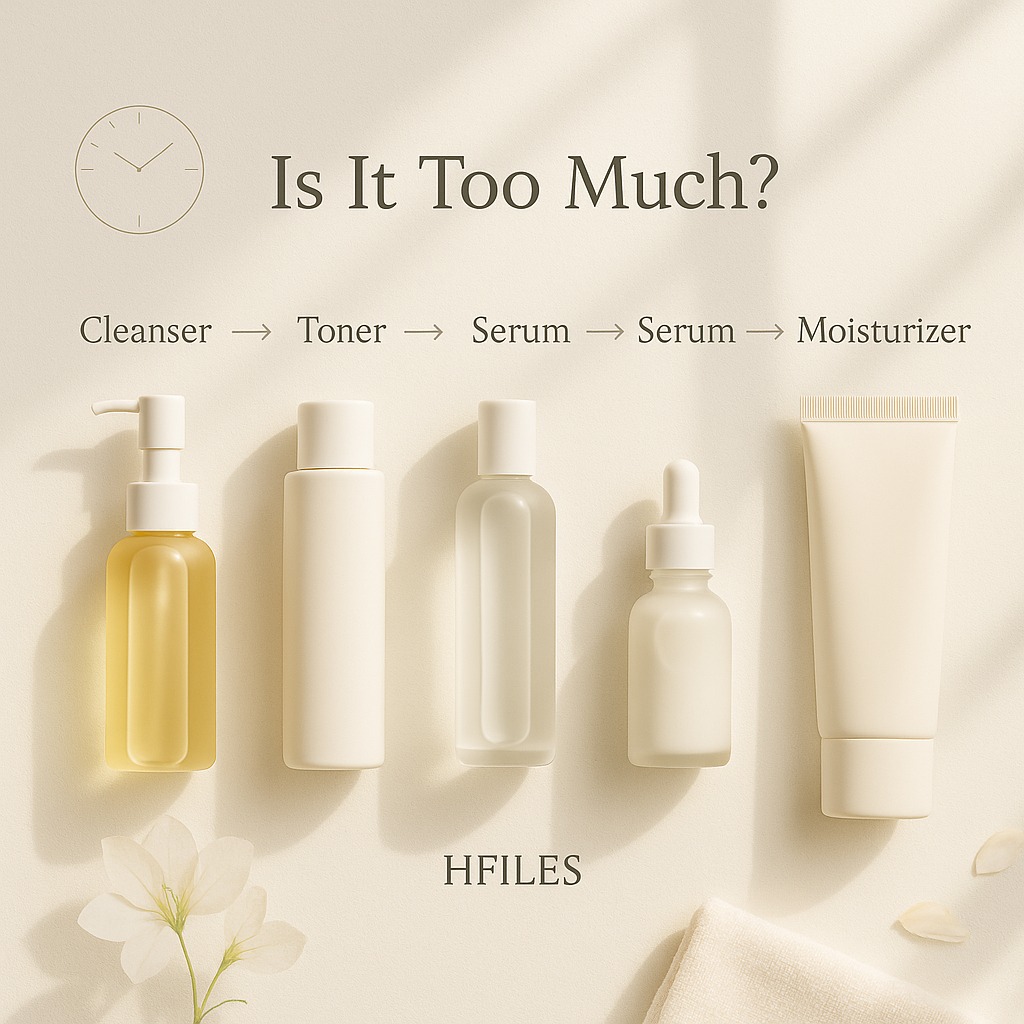If you’ve ever wondered how Korean celebrities get their flawless, glass-like skin, you’ve probably heard of the famous Korean skincare routine. This multi-step regimen has taken the beauty world by storm, promising radiant, youthful skin through a mix of science, tradition and consistency. But is it really worth all the effort? Let’s find out.


1. What is the Korean Skincare Routine?
When it comes to skincare, the Korean approach has taken the world by storm for good reason. Unlike the traditional Western method of “cleansing and moisturizing” the Korean philosophy revolves around hydration, prevention and layering. The routine typically consists of 10 steps but don’t worry – it’s more flexible than it sounds.
The 10-Step Korean Skincare Routine:
Sunscreen (morning only): The most important step to prevent premature aging and sun damage.
Oil Cleanser: Removes makeup, sunscreen and excess oil.
Water-Based Cleanser: Deep cleans the skin to remove dirt and sweat.
Exfoliator (2-3 times a week): Unclogs pores and removes dead skin cells.
Toner: Balances skin pH and preps for the next steps.
Essence: A lightweight, hydrating liquid that boosts skin cell turnover.
Serum/Ampoule: Targets specific skin concerns like acne, hyperpigmentation or wrinkles.
Sheet Mask (2-3 times a week): Delivers concentrated nutrients to the skin.
Eye Cream: Hydrates and reduces fine lines around the eyes.
Moisturizer: Locks in hydration and strengthens the skin barrier.
2. Does It Actually Work?
Yes but with a few conditions. The effectiveness of this routine depends on consistency, using the right products for your skin type and not overloading your skin. Here’s why this routine is backed by science:
Gentle Yet Effective: Most Korean skincare products prioritize mild, nourishing formulas over harsh chemicals, making them suitable for long-term use.
Deep Hydration: Korean skincare focuses on layering lightweight hydrating products, which helps keep skin plump and youthful.
Prevention Over Cure: Instead of treating wrinkles or acne after they appear, Korean skincare focuses on prevention, which dermatologists also recommend.
Customizable for Every Skin Type: Whether you have oily, dry, sensitive or combination skin, you can modify the routine by choosing the right ingredients.
3. Is It Too Much?

For some, yes. Not everyone has the time or patience for a full 10-step routine. However, you don’t need all ten steps to see results. You can simplify it to a 5-step version:
- Double Cleanse (Oil + Water Cleanser)
- ✅Oily & Combination Skin– Works well, but choose lightweight, non-comedogenic oils like squalane or jojoba.
- ✅Dry Skin – Great for hydration, but opt for gentler oil cleansers and avoid harsh foaming cleansers.
- ✅ Acne-Prone Skin – Helps remove excess sebum, but use non-irritating, fragrance-free products.
- Toner
- Serum (Pick one based on your skin concern)
- Moisturizer
- Sunscreen (Morning only)
Even this shorter version can dramatically improve your skin over time!
4. What Are the Downsides?
Too Many Products Can Overwhelm Your Skin: If you have sensitive skin, layering too many products can do more harm than good, leading to irritation or breakouts.
Expensive & Time-Consuming: High-quality Korean skincare products can be pricey and applying 10 products daily isn’t feasible for everyone.
Not All Products Suit Every Skin Type: Just because it’s a trending product doesn’t mean it’s right for you. Knowing your skin type and needs is critical to avoid unwanted reactions.
5. Things to Keep in Mind Before Starting
Know Your Skin Type: Whether you have oily, dry, combination or sensitive skin, choosing the right products is crucial.
Patch Test New Products: Always test a new product on a small patch of skin (like your wrist or behind your ear) before applying it to your face.
Don’t Over-Exfoliate: Exfoliation is essential but overdoing it can weaken your skin barrier, causing redness and sensitivity. Stick to 2-3 times a week.
Use Sunscreen Daily: No matter how good your skincare routine is, it’s incomplete without sunscreen. Protect your skin from harmful UV rays to prevent premature aging and damage.
Listen to Your Skin: Pay attention to how your skin reacts to products. If something causes irritation or discomfort, stop using it immediately.
5. Things to Keep in Mind Before Starting
6. Addressing Common Skin Concerns
1. Acne-Prone Skin: Look for products with:
- Salicylic acid
- Tea tree oil
- Centella asiatica
These ingredients help reduce breakouts and calm inflammation.
2. Dry Skin:Opt for deeply hydrating ingredients like:
- Hyaluronic acid
- Ceramides
- Snail mucin
These keep your skin moisturized and supple.
3. Hyperpigmentation & Dark Spots: Brighten and even out your skin tone with:
- Vitamin C
- Niacinamide
- Arbutin
These ingredients target discoloration effectively.
4. Aging Skin: Combat fine lines and loss of elasticity with:
- Retinol
- Peptides
- Collagen-boosting formulas
These work to smooth and firm the skin.
5. Sensitive Skin: Stick to gentle, soothing ingredients like:
- Aloe vera
- Chamomile
- Oat extract
Make sure the products are fragrance-free and alcohol-free for minimal irritation.
Note: Always consult a dermatologist or skincare professional before starting any new skincare product. Everyone’s skin is different, and what works for one person may not work for another. If you experience any irritation, redness, or unexpected side effects, stop using the product immediately and seek medical advice.
Final Verdict: Should You Try It?
If you’re looking for healthy, glowing skin and are willing to be patient, then the Korean skincare routine is absolutely worth trying. But you don’t need to follow all 10 steps—start with a few and see what works for you!
The biggest takeaway? Consistency matters more than the number of products you use. Even a simple, well-planned routine can make a huge difference over time, whether it’s Korean-inspired or not.
So, what do you think? Would you give the Korean skincare routine a try? Let us know!
This blog post is brought to you by Health Files, your trusted platform for managing and organizing your health records. Visit us at Hfiles to securely store, access, share and track your medical documents with ease.


